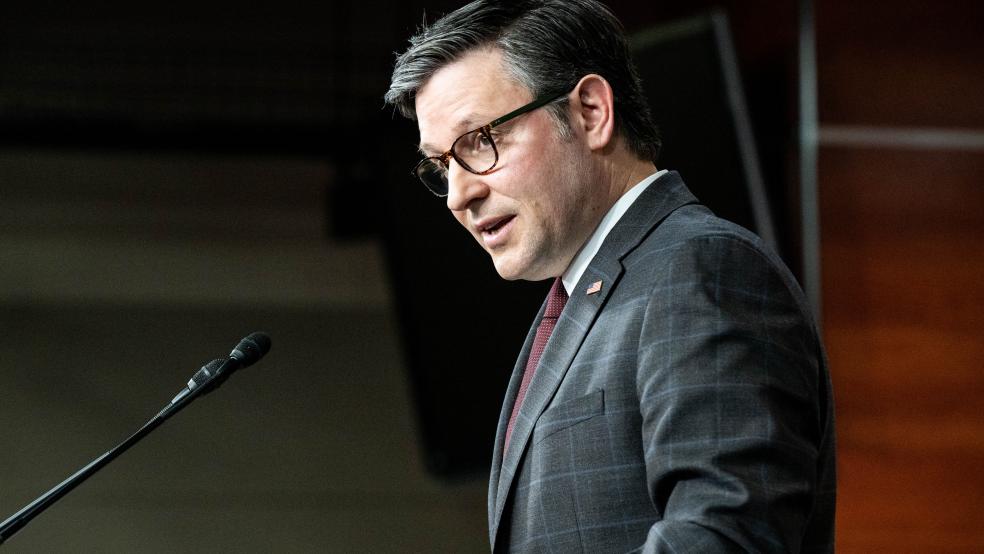Our nation’s capital famously freaks out at the sight of more than a few snowflakes, so a weather forecast calling for an inch or two of snow to fall on Washington, D.C., by Friday morning sent lawmakers scrambling on Thursday to pass the short-term spending bill needed to avert a partial government shutdown this weekend.
The Senate on Thursday afternoon approved the stopgap measure by a 77-18 margin, sending the bill to the House, where it was quickly passed, 314-108, despite the opposition of hard-right conservatives who had unsuccessfully pressed Speaker Mike Johnson to amend the legislation to include Republican border policy changes.
To bypass conservative objections that could have derailed the bill, the House vote came under suspension of the rules, meaning a two-thirds majority was required to pass it. That hurdle was easily cleared, as 207 Democrats joined with 107 Republicans in supporting the bill, while 106 Republicans and two Democrats opposed it.
Johnson had said last year that he was done with short-term spending packages, but he agreed to this one — and relied on Democratic votes to pass it — to avoid having Republicans bear the blame for a disruptive shutdown during an election year and to give appropriators more time to finish writing their annual spending bills. Johnson said in a statement early this week that the short-term funding patch “is required to complete what House Republicans are working hard to achieve: an end to governance by omnibus, meaningful policy wins, and better stewardship of American tax dollars.”
Two new deadlines: The bill will keep the government open and set up two new deadlines, with some agencies funded through March 1 and the rest through March 8, providing six or seven weeks, respectively, for appropriators to continue drafting spending bills totaling $1.66 trillion for the 2024 fiscal year that started back in October. Lawmakers are looking to finish the appropriations process ahead of an April deadline that would otherwise require across-the-board 1% spending cuts.
“Once we put the threat of a shutdown behind us, I hope we continue seeing even more bipartisanship as appropriators complete the very important task of fully funding the government in the coming weeks,” Senate Majority Leader Chuck Schumer said. “This is what the American people want to see: both sides working together and governing responsibly. No chaos. No spectacle. No shutdown.”
Schumer went on to criticize the House conservatives who opposed the stopgap, calling them “a loud contingent of hard right rabble-rousers who, amazingly, believe that causing a shutdown is somehow a good thing, if it gets them what they want.”
What’s next: President Joe Biden is expected to sign the continuing resolution before the Friday night deadline. Appropriators still have much work to do to finalize the details of the 12 annual spending bills, and Johnson will face the fury of GOP hardliners who are demanding he push for some conservative wins, including border measures and abortion restrictions that Democrats call poison pills. While the spending bills are negotiated and drafted, lawmakers are expected to turn their focus to the border deal being negotiated in the Senate to unlock a supplemental spending package including aid for Ukraine and Israel.





